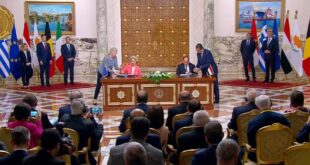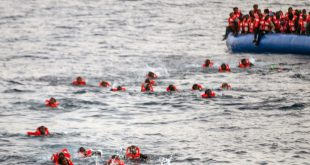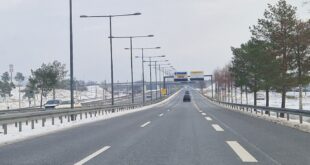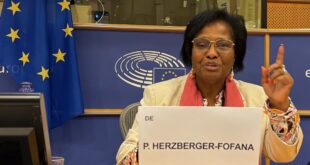The Council of the European Union presented a “New Pact on Migration and Asylum” to the public on 23 September . The pact focuses largely on migration-control at the external borders of the European Union. The proposed measures include border screenings, accelerated asylum procedures and new regulations for the distribution of asylum seekers. Here is a breakdown of the suggested changes by Charlotte Hauswedell
—-
A new migration pact, presented by European Commission President Ursula von der Leyen on Wednesday (23 September), is meant to reform Europe’s overburdened and fragmented asylum system. The goal is to build a system of “fair sharing of responsibility and solidarity” among EU countries, the European Commission (EC) says, and, by applying clear rules, to provide “certainty and protection for migrants and refugees.”
The New Pact on Migration and Asylum would require all 27 EU countries to take part. It still faces approval by EU leaders and the European Parliament.
Here are the most important aspects:
Arrival at the border: Pre-entry screening
The European Commission wants to introduce a compulsory system of pre-entry screening for migrants arriving irregularly on EU territory (this appears to mean either at the border, or if someone is “apprehended within territory”). The screening includes a health and security check, and the taking of fingerprints and registration in the Eurodac database.
This is called the “new integrated procedure at the border.” The EC however notes that the location of the screening is flexible and “can also take part in other locations.”
Border asylum procedures
On the basis of the screening it will be decided whether an asylum-seeker falls into an accelerated procedure (“border asylum procedure”) or the normal asylum procedure. According to the EU, this process should take a maximum of five days.
For asylum-seekers from countries with a low asylum acceptance rate (the proposed rate is one lower than 20%) the accelerated border procedure shall take effect. This is to take no longer than 12 weeks.
If a decision cannot be taken within 12 weeks, they’ll be sent to an EU country to process the asylum procedure. If their asylum claim has been rejected, they will be sent back, the EC said.
Legal guarantees
The EC says it wants to “ensure full respect of rights from beginning to end of the process.” This includes ensuring the effective access to asylum. The pact proposes several monitoring mechanisms, including the setting up of a new EU Agency for Asylum. National systems are to be monitored by the EU, through peer reviews by other member states, as well as through Frontex and the new EU Agency for Asylum monitoring.
Dublin regulation – will it stay or will it go?
The Dublin Regulation, under which the country of entry to the European Union is required to process an asylum application, is not to be abolished. However, its criteria are to be expanded.
Asylum-seekers who have close family members in another EU country or who have worked or studied there, are to be taken to that country to undergo their asylum process. Also, if someone was issued a visa by a specific country, the asylum claim has to be processed there. This way the EU wants to assure that more asylum-seekers are distributed between countries. It is also an attempt to close “loopholes encouraging people to attempt to abscond during the procedure.”
Another amendment to the current system is that recognized refugees would benefit from free movement after three years instead of after five as is currently the case.
Distribution
The new plan does not include binding asylum quotas – something that has been a sticking point for years as single countries like Hungary or Poland have refused to take in asylum-seekers. Instead the EU proposed a new system of shared “solidarity and responsibility.”
‘Solidarity mechanism’
According to this solidarity system, all EU countries would be obliged to take on responsibility, but not necessarily by taking in asylum-seekers. Countries can also opt to pitch in by other means, either by sending border guards, taking other operational measures, or paying for deportations.
Scenarios
This system works in part on a voluntary basis and in part on a mandatory basis, depending on the level of urgency of the situation. The commission proposes a three-stream approach.
In normal times – under the first pillar – taking in arriving migrants from other EU states is voluntary. According to the EC, normal times are “outside of pressure situations.”
Willing member states will pledge capacities once a year and enter a “pre-committed pool,” according to news agency dpa.
But when one country’s asylum system is under extreme pressure, the second level — a “mandatory solidarity” mechanism — gets triggered. Other EU countries will have to pitch in, either by taking in asylum-seekers or through other means, such as sending border guards or paying for deportations.
Finally, under the third stream — designed for crisis situations such as the so-called migration crisis of 2015 — the EC could oblige member states to take on legal responsibility for deportations. This is what the EC calls “return sponsorship.” This means that individual member states that refuse to take in asylum seekers will not be obliged to do so, even in crisis situations.
READ ALSO:New Study on COVID-19 in Africa: Key Findings
Deportations
One of the central aims of the new migration pact is to expediate deportations of refused asylum seekers. Deportations would no longer be done by single member states individually but in coordination.
A member state that refuses to take in eligible asylum seekers (country “A”) can instead become involved in deportations. This means that member state “A,” for a specific time period, would be responsible for deporting a specific number of persons who are present in another EU country, country “B.” According to an explanation by news agency epd, this could also mean that country “A” might have to take in the refused asylum seekers if deportations could not be implemented in time.
Cooperation with third countries
The EC also wants to deepen cooperation with non-EU countries in order to strengthen countries of origin, and in effect, stem migration to the EU.
The proposed measures include ramping up support for refugee hosting countries, fighting migrant smuggling, or “developing orderly channels for legal migration.” It also wants to create further incentives – such as jobs –”close to home, especially for youth.”
The EC also wants to step up cooperation by third countries in taking back refused asylum seekers since deportations often get held up by non-EU countries that refuse to take back migrants who have passed their territory on their way to the EU.
Currently, the EU has readmissions agreements with only 24 countries, according to dpa.
With epd, dpa, European Commission
© InfoMigrants
 THE AFRICAN COURIER. Reporting Africa and its Diaspora! The African Courier is an international magazine published in Germany to report on Africa and the Diaspora African experience. The first issue of the bimonthly magazine appeared on the newsstands on 15 February 1998. The African Courier is a communication forum for European-African political, economic and cultural exchanges, and a voice for Africa in Europe.
THE AFRICAN COURIER. Reporting Africa and its Diaspora! The African Courier is an international magazine published in Germany to report on Africa and the Diaspora African experience. The first issue of the bimonthly magazine appeared on the newsstands on 15 February 1998. The African Courier is a communication forum for European-African political, economic and cultural exchanges, and a voice for Africa in Europe.

































